Tattoos are a lifelong commitment, and getting your first one is always an exciting moment. Even though people tell you that tattoos hurt, it’s worth the temporary pain for some incredible body art, right? Unfortunately, most of the time tattoos cause more than just a little bit of discomfort – especially in areas where there isn’t much flesh between skin and bone. To help with this issue, numbing creams have become popular among tattoo-goers in recent years.
With the rising popularity of tattoos, there has also been an influx of information and advice on what to do and not do surrounding them. This can be overwhelming when trying to decipher which tips are creditable. OTC numbing creams might be easy to find but that does not ensure their safety in all cases. Understand what active ingredients are in the cream you plan to use during or after your tattoo before moving forward with treatment.
If you’re thinking of getting a tattoo, then you may be wondering if it’s possible to use a numbing cream before the procedure. The answer is yes – in fact, many people choose to do this to make the experience less painful. This blog post will discuss why numbing cream is used before tattoos, what ingredients are typically found in these creams, and how they work. We’ll also provide tips on how to select the best numbing cream for your needs.
What Are Numbing Creams?
Numbing creams are topical anesthetics that work by temporarily numbing the skin. They’re often used before medical procedures, like getting a tattoo, to help reduce pain and discomfort. There is a variety of numbing creams on the market, and they typically contain lidocaine or prilocaine as their active ingredients [1].
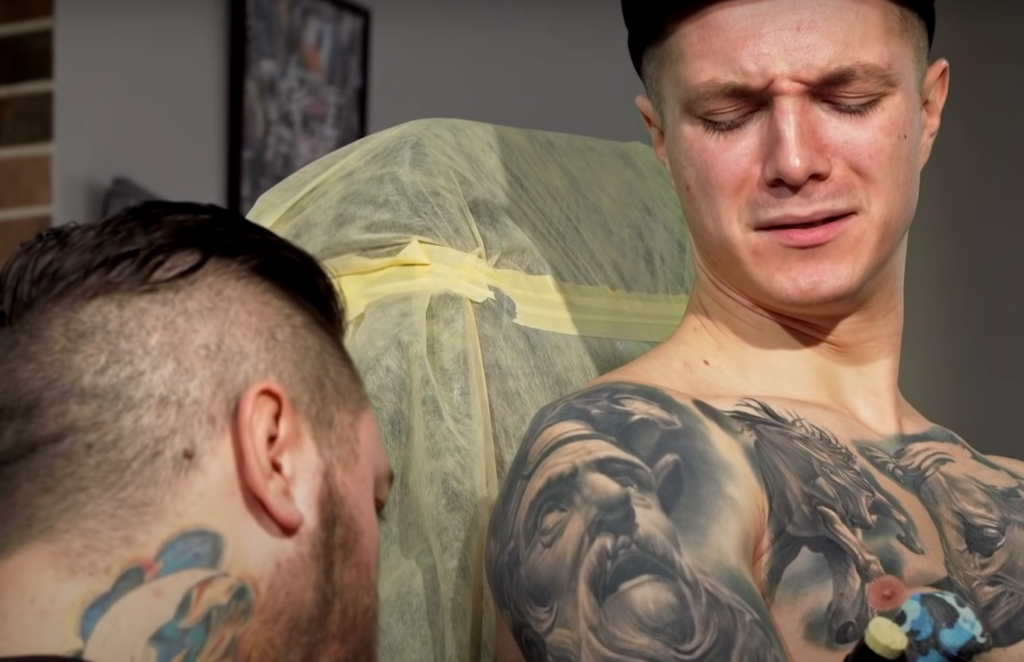
When applied topically, these creams can numb the skin within minutes and typically last for one to two hours. Numbing creams are available over the counter (OTC) and by prescription.
OTC numbing creams contain lower concentrations of active ingredients than those prescribed by a doctor. As a result, they may not be as effective at numbing the skin. OTC numbing creams are also not recommended for use on large areas of the body or for long periods.
Features Of Numbing Creams For Tattoo Treatments:
Numbing Skin Before Getting Tattooed
If you’re considering getting a tattoo, you may have heard that numbing creams can help reduce the pain of the tattoo needle. Numbing creams are available over-the-counter and by prescription, and they work by temporarily numbing the skin.
Numbing creams contain an active ingredient called lidocaine, which is a type of local anesthetic. When applied to the skin, it works by blocking nerve signals from reaching the brain. This prevents you from feeling pain in the area where the cream is applied.
The pain you feel while getting a tattoo is part of the experience, and most people can stand it for up to several hours. But sometimes the discomfort is too much. If that’s the case, you may want to try numbing your skin before going in for your appointment.
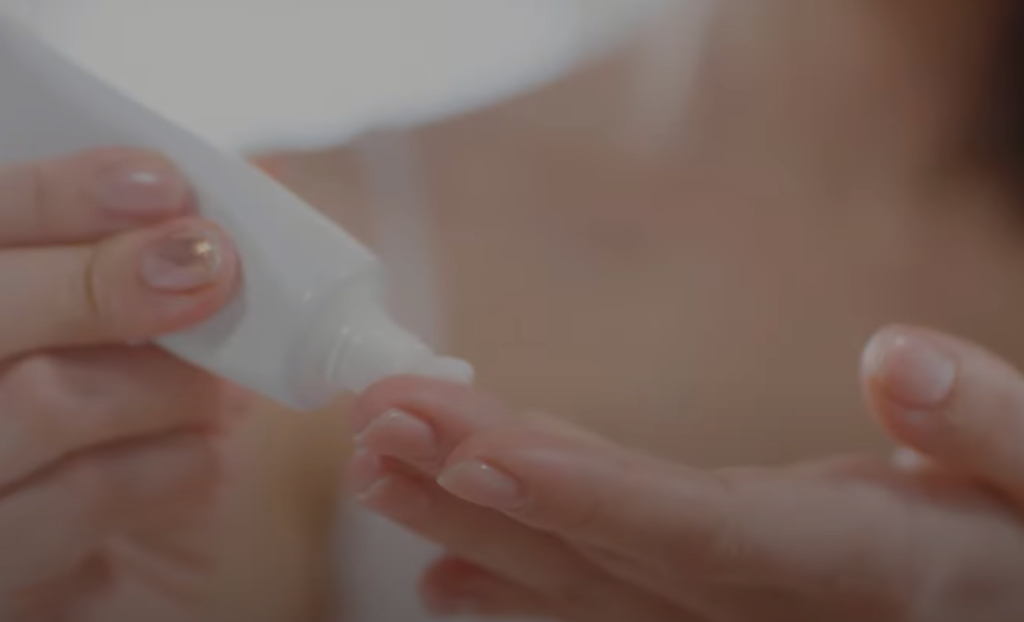
For instance, some body parts are more painful to tattoo than others, such as the ribs, the tops of feet, and the backs of knees. While numbing cream does not eliminate pain, it significantly reduces it and makes your tattoo experience more pleasant – especially during a long session [2].
Numbing Skin Before Laser Removal
Laser removal is a popular tattoo removal method, but it can be quite painful. Many people numb their skin before laser removal to help reduce the pain. Numbing creams are available over-the-counter and by prescription. Talk to your doctor about which numbing cream is right for you.
Make sure to ask your specialist about their numbing policy before laser removal. Some will charge additional fees for the application, while others include it in the consultation.
Prescription Versus Over-The-Counter Products
There are a few key things to consider when choosing a numbing cream for your tattoo. The first is whether you want a prescription or over-the-counter product. Prescription-numbing creams tend to be more potent and longer lasting, but they also come with more risks. Over-the-counter numbing creams are generally safe and easy to use, but they may not be as effective [3].
Another thing to consider is the ingredients in the cream. Some numbing creams contain lidocaine, which is a common anesthetic. Others contain prilocaine, which is another type of anesthetic. Make sure to read the label carefully so you know what you’re getting.
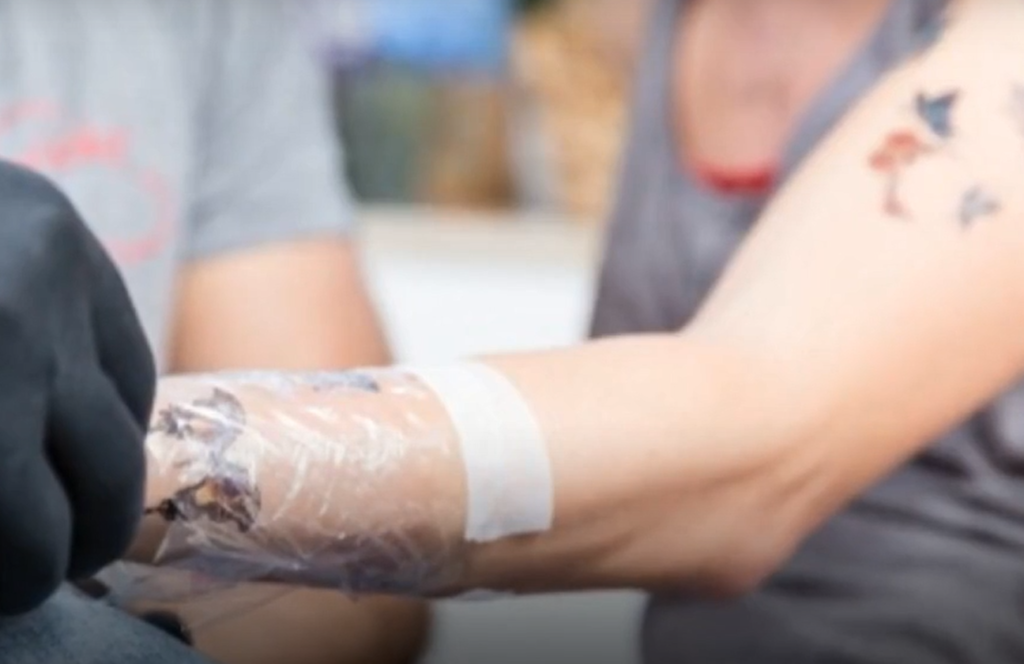
Finally, consider how long you’ll need the numbing cream to work. Most tattoo sessions last about two hours, so you’ll want a cream that will last that long. Prescription creams typically last longer than over-the-counter creams.
If you’re considering using a numbing cream for your tattoo, talk to your artist and see what they recommend. Every artist is different, and they may have a preference for one type of cream over another. Ultimately, the decision is up to you, but it’s important to do your research before making a final decision.
How To Use Numbing Cream?
Numbing cream is available over the counter at most pharmacies. You can also find it online. The cream typically comes in a small tube or jar. To use it, simply apply a generous amount to the area where you will be getting your tattoo. Rub it in until the area is completely numb [4].
When using numbing cream, make sure to follow the instructions on the packaging. Apply a generous amount of numbing cream to the area where you will be getting your tattoo. Cover the area with plastic wrap. Leave the numbing cream on for at least an hour before removing it.
Just keep in mind that numbing cream does not last forever. So if your tattoo appointment is longer than usual, you may need to reapply the cream once or twice to keep the area numb.
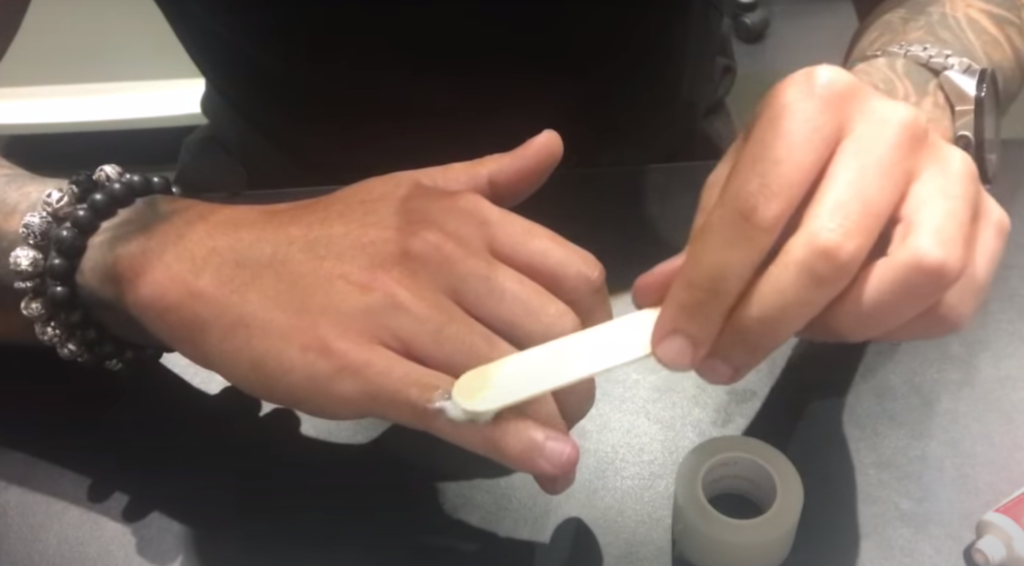
Numbing creams are safe to use before getting a tattoo. They can help reduce pain and discomfort during the tattooing process. If you have sensitive skin or are worried about pain, consider using a numbing cream before getting your next tattoo.
Potential Side Effects Of Tattoo Numbing Creams:
1) Skin Reactions
The most common side effect of topical numbing agents is skin reactions. These can range from mild to severe and include itching, redness, swelling, and rash.
In some cases, these reactions can be painful or uncomfortable [5]:
- Systemic reactions. In rare cases, topical anesthetics can cause systemic reactions, which means they affect the entire body. Symptoms of systemic reactions include dizziness, lightheadedness, headache, nausea, and vomiting. If you experience any of these symptoms after using a numbing cream, call 911 or seek medical attention immediately;
- Allergic reactions. Some people may be allergic to the ingredients in tattoo-numbing creams. Allergic reactions can range from mild (rash, itching, redness) to severe (trouble breathing, swelling of the face or throat). If you have any allergies, be sure to check the ingredient list on the numbing cream before using it. If you experience any signs of an allergic reaction after using a numbing cream, discontinue use and seek medical attention immediately;
If you’re considering using a numbing cream before getting a tattoo, be sure to talk to your tattoo artist and healthcare provider first. They can help you weigh the risks and benefits and make sure that you’re using the cream safely. Tattoo-numbing creams are safe for most people, but they do have potential side effects. Be sure to use them as directed and stop using them if you experience any adverse reactions.
2) Increased Pain During The Process Of Getting A Tattoo
It’s important to note that numbing creams don’t eliminate pain. They just help to reduce it. You may still feel some pain during the tattooing process, even if you use a numbing cream. Some people find that their tattoos hurt more when they use a numbing cream.
That’s because the numbing effect can wear off before the tattoo is finished, leaving you with an unfinished tattoo and pain. If this happens, your tattoo artist will usually give you a break so that you can rest and recuperate before continuing [6].
If you have a low pain threshold or are worried about how much pain you’ll feel during a tattoo, talk to your artist about using a numbing cream. They can help you decide if it’s the right choice for you. Tattoo-numbing creams are safe for most people, but they do have potential side effects. Be sure to use them as directed and stop using them if you experience any adverse reactions.
When To Apply Numbing Cream?
The recommended time to apply a numbing cream is 45 minutes before your tattoo appointment. This will give the topical anesthetic enough time to numb the skin. It is important to note that numbing creams don’t work immediately.
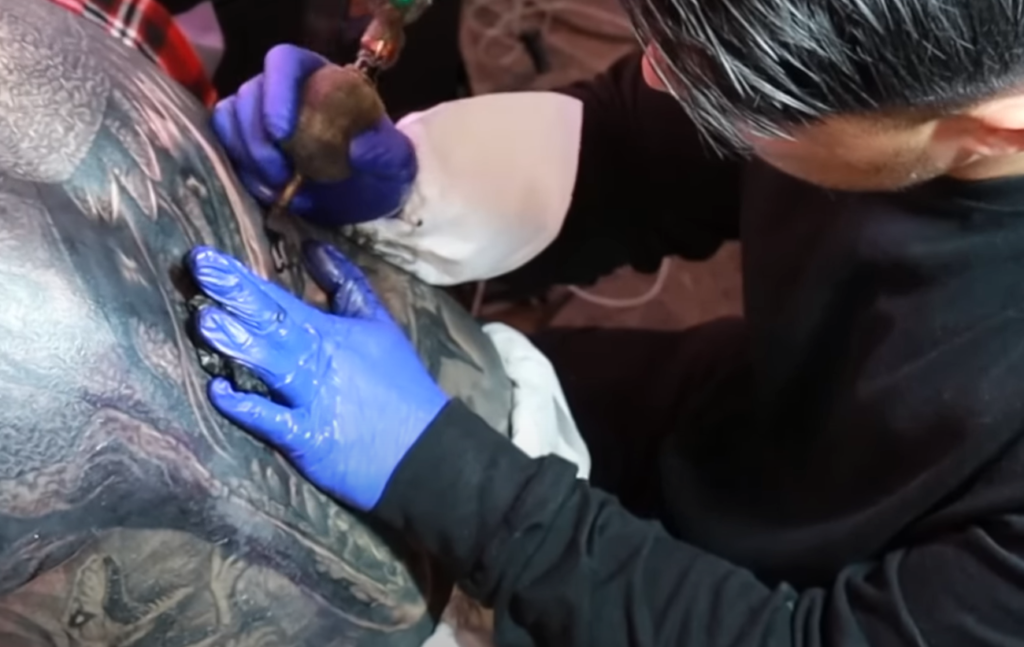
How Long Does Numbing Cream Last?
Such a cream has a longer numbing effect than an ice pack. The numbing cream can last for up to two hours if you apply it properly, but this varies based on the cream’s strength and how much you use. The numbing effect generally wears off after about 45 to 60 minutes, however. If you wrap the afflicted region in cling film while applying the cream, it will stay effective for longer [7].
Does A Numbing Cream Work For Small Tattoos?
For small tattoos, a numbing cream may help to dull the pain. However, it is important to note that numbing creams can also affect your skin’s ability to heal. Therefore, it is important to speak with your tattoo artist before using any type of numbing cream on your skin.
Does Numbing Cream Work For Large Tattoos?
For large tattoos, a numbing cream is unlikely to provide much relief. This is because the pain from a large tattoo comes from the deep tissue damage that is being done. Numbing creams can only numb the surface of your skin, so they will not be able to dull the pain of a large tattoo.
If you are considering getting a large tattoo, it is important to speak with your artist about ways to manage the pain. Some artists may recommend taking over-the-counter pain medication before your tattoo session. Others may suggest using ice packs or topical ointments during and after your tattoo to help with the discomfort. Whatever method you choose, make sure you discuss it with your artist beforehand so that they can plan accordingly.
Does Numbing Cream Fade Tattoos?
A quality numbing cream will not only make sure your tattoo session is comfortable, but it will go a long way in protecting your skin during the tattooing process. Look for products that are specifically designed for use before tattoos, and always check with your artist to see if they have any specific recommendations [8].
Though numbing creams don’t fade tattoos, people have observed that the healing process can tattoo seem to take longer when numbing cream is used. This is likely because the skin is unable to properly absorb the tattoo ink while numbing cream is present. If you’re concerned about how numbing cream will affect your tattoo, talk to your artist before using it.
Why Do Tattoo Artists Not Use Numbing Cream?
Tattoo artists do not use numbing cream because they believe it interferes with the tattooing process. Numbing cream can cause the skin to swell and bleed, which makes it difficult to apply the tattoo ink evenly. In addition, numbing cream can make the skin more sensitive to pain after the tattoo is applied, which can cause discomfort for the person getting the tattoo.
While there are some risks associated with using numbing cream before getting a tattoo, there are also some benefits. Numbing cream can help reduce anxiety and fear associated with getting a tattoo. It can also help reduce pain during the tattooing process. If you are considering using numbing cream before your next tattoo, be sure to talk to your artist about the pros and cons.
Should I Tell My Tattoo Artist I Used Numbing Cream?
If you’re considering using numbing cream before getting a tattoo, you might be wondering if you should tell your artist. The answer is yes – you should always tell your tattoo artist if you’ve used any kind of numbing cream or anything else to numb the pain.
It’s important to understand that numbing creams can affect the way your tattoo heals, so it’s best to leave the decision up to your artist. They may not want to use numbing cream on someone who is already experiencing pain from their tattoo, as it could cause further damage.
Some artists may be okay with using numbing cream, but it’s always best to check with them beforehand.
FAQ:
- Is it bad to put numbing cream on before getting a tattoo?
No, it’s not bad to put numbing cream on before getting a tattoo. In fact, many people use numbing cream to help ease the pain of getting a tattoo. However, it’s important to make sure that you follow the instructions on the numbing cream packaging and only use the cream for the recommended amount of time. Otherwise, you may end up with an uneven tattoo or even an infection [9].
- What is the least painful place to get a tattoo?
There is no definitive answer to this question. While some people claim that the pain of getting a tattoo depends on the individual’s pain threshold, others say that certain areas of the body are more sensitive than others. In general, however, it is agreed that tattoos on fleshier areas tend to be more painful than those on bony areas.
The amount of discomfort caused by a tattoo is determined by your age, sex, and pain threshold.
The most painful areas to get a tattoo is your ribs, back, hands, and shins. Your forearms, stomach, and outer thighs are the least sensitive locations for receiving a tattoo [10].
- What should you do before getting a tattoo?
You should do a few things before getting a tattoo:
- First, make sure you know what design you want and where you want it placed on your body;
- Second, find a reputable artist who can do the tattoo justice;
- Third, schedule an appointment and be prepared to pay for the service;
- Finally, get your skin ready for the big day by exfoliating and moisturizing regularly;
- Does numbing cream affect tattoo ink?
A numbing cream of high quality will have zero effect on the ink or tattoo itself [11]. This is because the tattoo artist applies the ink underneath the top layer of the skin, which the numbing cream does not penetrate.
So if you’re worried about how your tattoo will look or feel after numbing cream has been applied, don’t be! The numbing cream will not change anything about your tattoo except make the process more comfortable for you.
- How can you make tattoos hurt less?
There are a few things you can do to make tattoos hurt less:
- First, you can try using a numbing cream before getting your tattoo. Numbing creams work by temporarily numbing the area of your skin where you’ll be getting the tattoo. This can help reduce the pain you feel during the tattooing process;
- Another thing you can do to make tattoos hurt less is to drink plenty of water before and after getting your tattoo. Drinking water helps keep your skin hydrated, which can also help reduce pain and discomfort;
- Finally, if you’re really worried about how much a tattoo might hurt, you could always get a small tattoo in an easily hidden spot first. This way, if it does end up being too painful, you can always have it removed or covered up;
- What can I take before a tattoo to ease the pain?
Pain is relative, some people feel more pain than others and some areas of the body are more sensitive than others.
You can take over-the-counter pain medication like ibuprofen or acetaminophen. You can also ask your tattoo artist if they have any numbing cream that you can use before getting your tattoo.
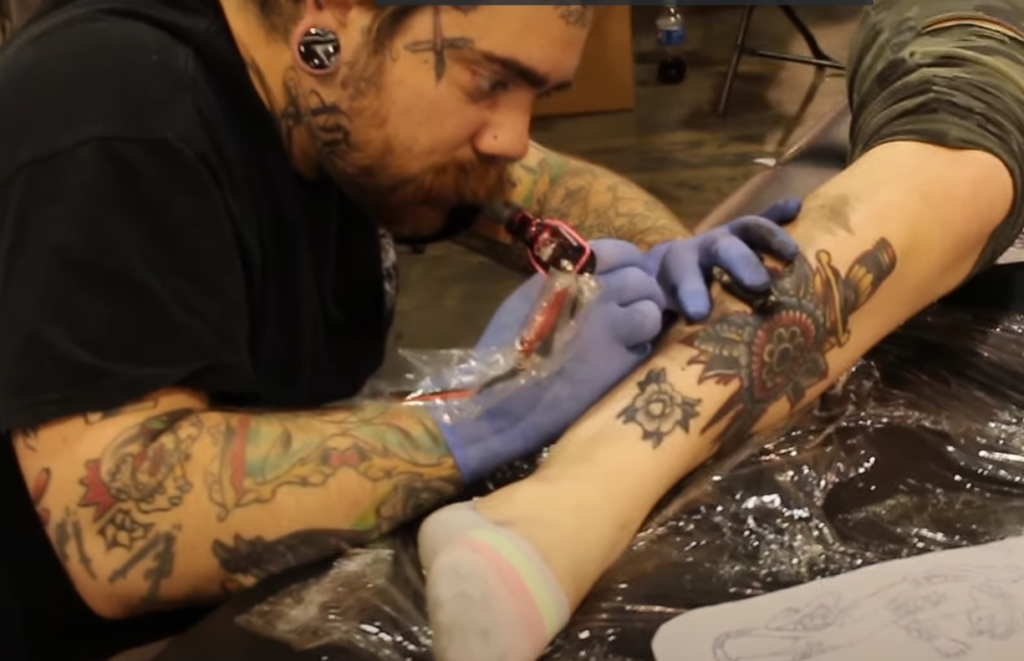
If you’re really worried about the pain, you can always get your tattoo on a body part that has fewer nerve endings, like your thigh or upper arm. But keep in mind that this will likely increase the overall cost of your tattoo since it takes longer to complete.
- Can tattoo-numbing creams burn your skin?
Some people who use numbing cream may experience minor side effects, such as skin irritation, redness, or mild burning [12].
- What numbing creams do tattoo artists use?
The most popular ones are lidocaine, benzocaine, and tetracaine. These all work by temporarily numbing the area where they are applied:
- Lidocaine is the most common type of numbing cream that is used for tattoos. It is also the strongest, so it will numb the area more than other types of creams;
- Benzocaine is not as strong as lidocaine, but it does work well for smaller tattoos;
- Tetracaine is the weakest of these three creams, but it can still be effective for some people;
If you are considering using a numbing cream before your tattoo, you should talk to your tattoo artist about which one would be best for you. They will be able to help you choose the right cream based on the size and location of your tattoo.
Some numbing creams are available over the counter, but others require a prescription from a doctor. If you want to use a numbing cream before your tattoo, make sure to get it from a reputable source. There are some fake numbing creams on the market that don’t actually work, so you don’t want to risk using one of these.
Useful Video: Should People Use Numbing Cream?
References:
- https://www.byrdie.com/painless-tattoo-cream-reviews-5271374
- https://majestictattoonyc.com/how-to-numb-skin-before-tattoo-or-laser-removal
- https://tattoo-spark.com/can-i-use-numbing-cream-before-a-tattoo
- https://www.byrdie.com/painless-tattoo-cream-reviews-5271374
- https://majestictattoonyc.com/how-to-numb-skin-before-tattoo-or-laser-removal
- https://medium.com/@polinabir/tattoo-numbing-cream-full-guide-5a54bca2baf0
- https://tattoo-spark.com/can-i-use-numbing-cream-before-a-tattoo
- https://www.inkedmind.com/do-numbing-creams-affect-new-tattoos
- https://tatring.com/getting-tattooed/Dr-Numb-Tattoo-numbing-cream
- https://www.insider.com/guides/health/tattoo-pain-chart
- https://www.inkedmind.com/do-numbing-creams-affect-new-tattoos
- https://www.byrdie.com/painless-tattoo-cream-reviews-5271374


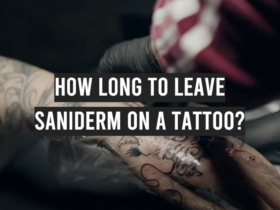


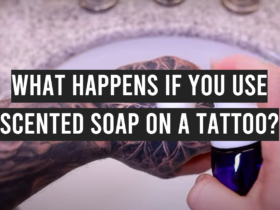
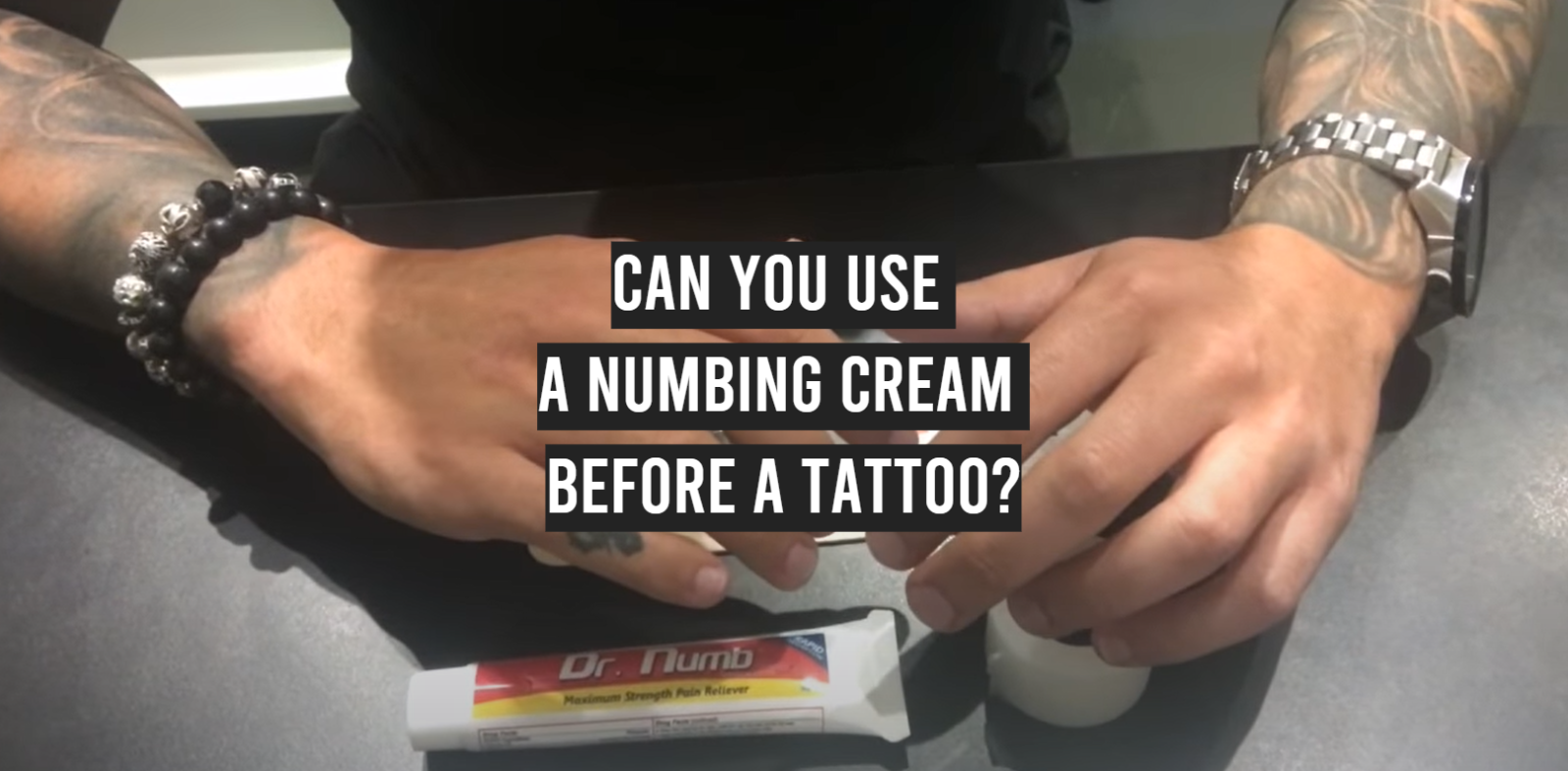

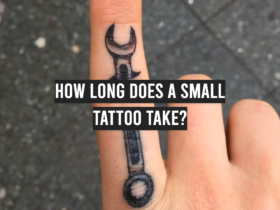

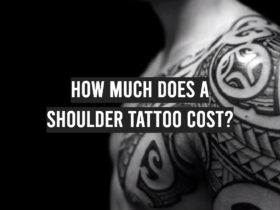
Leave a Review